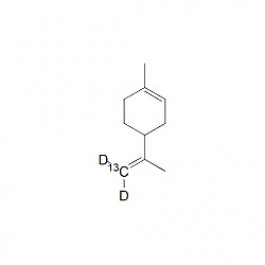New user? / Forgot your password?
0 Item | 0,00 €
Need NMR solvents or supplies? Click here and check out our ARMAR Isotopes catalog!
13C-D2-DL-Limonene Solution (Solvent: Cyclohexane)
| Item number | 684200 |
| CAS | 1351625-27-8 |
| Formula | C10H14D2 |
| Molecular weight | 139,26 g/mol |
| Quantity | 1X5ML |
| Concentration | 1000 µg/ml |
| Solvent | Cyclohexane |
| storage conditions | 4 °C |
Part of Product groups:
Product Variations:
Product | Catalog No./ CAS No. | Quantity | Price | |
|---|---|---|---|---|
 | 681360 | 1X250MG | Please log in. | |
 | 681627 | 1X1ML | Please log in. | |
 | 684199 | 1X10MG | Please log in. | |
13C-D2-DL-Limonene solution |  | 684200 | 1X5ML | Please log in. |



